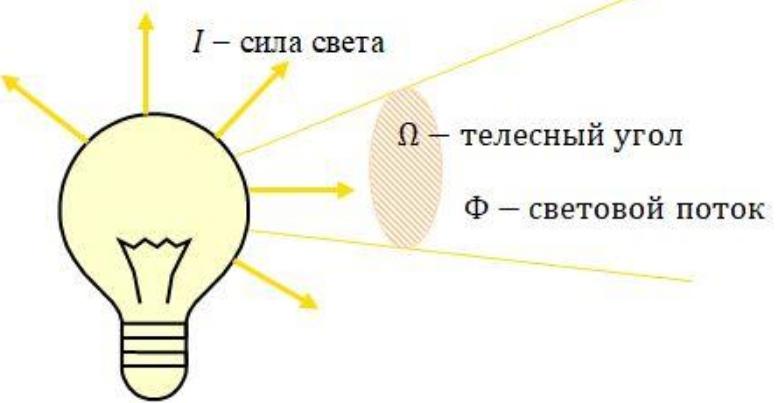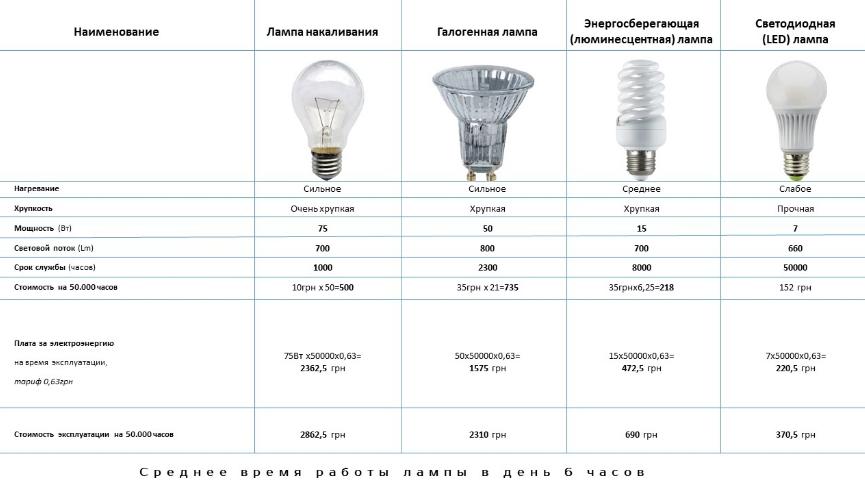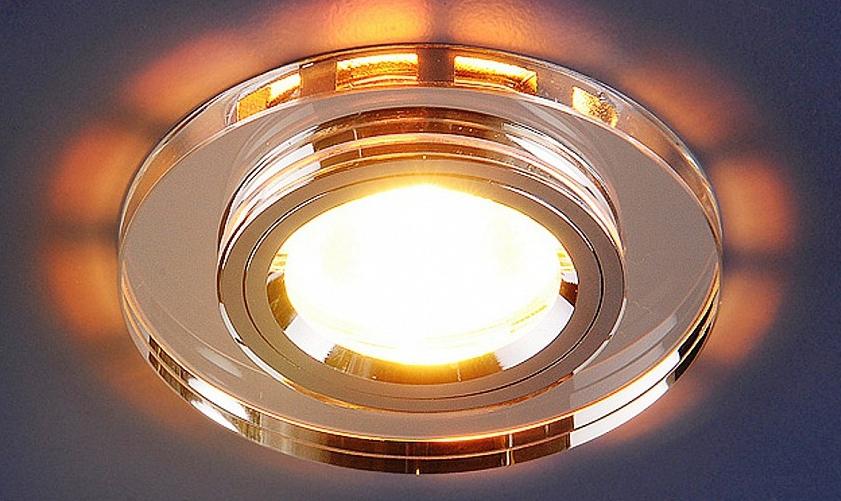How light intensity is measured
Different types of lamps create luminous flux of different intensity, so the quality of light varies greatly. To choose the best option for a particular room, you need to understand how the light intensity depends on the luminous flux. Great depth in the subject makes no sense, but to learn the basics is worthwhile.
What is light intensity
First of all it is necessary to understand that radiation from any light source is distributed in space unevenly. To characterize its distribution in different directions and is used the concept of light intensity. That is, it is the spatial density of the light flux, defined by its relation to the solid angle, on top of which is light source. The segment within which the light flux is distributed is called the light intensity - its formula is as follows:
F reflects the light flux and ω is the solid angle. The unit of light intensity is candela. In order not to understand the physical terms further, we can use a more common indicator - 1 candela, distributed within the solid angle is equal to 1 lumen.

For the application of information it is necessary to touch upon such an indicator as illuminance. It reflects the amount of light falling on a particular surface.
How is it calculated
At the domestic level, the simplest definition of light intensity is the brightness of a light bulb. The more powerful it is, the greater the value, but as mentioned above, the value depends a lot on the angle within which the light flux is distributed.
That is, the intensity of light does not depend on the power of the bulb, but on the angle of distribution. To make it clearer, we can consider the example of a flashlight. Models with halogen bulbs usually use a version with a power of about 30 watts. If you just plug in such a lamp in a dark room, it will illuminate it, but the quality of illumination will be far from ideal.
But if you put the bulb in a reflector that limits the spread of light, it will not spread in all directions, but will concentrate in one direction. The strength of the light will increase many times and it will be higher the narrower the angle of propagation.
That is, with the competent use of reflectors or the concentration of light flux in a limited space, you can use less powerful bulbs, but still achieve a better quality of illumination.
The indicator under consideration is never specified on the packaging of light bulbs, as it is impossible to determine in advance. It all depends on what kind of plafond will be used and what area will be illuminated. Therefore, it is necessary to calculate on the basis of the type of lamp and the power of the bulbs installed in it.
Since the standards of illumination for the house are most often given in units such as lux, you must remember that lux is 1 lumen divided by a square meter.
By the way! At night with the moon the illumination is equal to 1 lux, on a cloudy day - about 100 lux, and in sunny and clear - from 10 000 to 25 000 lux.
Video lesson: What is luminous flux and luminous intensity
Light intensity of major sources
To choose a light bulb for a domestic situation there is no point in going into physical quantities and using lux meters to check the lighting in a room. It is much easier to begin with the requirements of the room and the light intensity needed in the situation in question. If you compare the different solutions, you can draw the following conclusions:
- Incandescent bulbs. - Traditional options, which many still take as a benchmark when comparing other varieties. Since the glow comes from the heating of the tungsten, the surface gets very hot regardless of the wattage. We take the 75 watt version as a reference. In other types the power will be comparable to this value. Such a bulb gives a luminous flux of 700 Lumens.
- Halogen bulbs - An improved solution that also uses a filament. But due to the filling with special gases and the use of special quartz glass, the quality of light in this version is higher. With a power rating of 50 watts, it provides a luminous flux of 800 Lumens. This is an example of how limiting the angle of light propagation significantly increases its power.
- Fluorescent lamps They provide good quality light, but also run much cooler, which makes them safer for the home. With a wattage of 15 watts they provide an indicator of 800 lumens, which allows you to illuminate the room more economically. At the same brightness is an order of magnitude better, which is important because it affects the quality of lighting.
- LED options. They have the highest light output in relation to power consumption today. With a power consumption of 7 watts, the source gives a luminous flux of 660 Lumens. At the same time it is worth noting and excellent quality of lighting, it is uniform and can have different color temperatures, which is important when choosing the right option for the living room, kitchen or bedroom.

It is also worth considering that in incandescent and halogen versions, the quality of lighting decreases over time, as the tungsten spiral from constant heating to high temperatures gradually thinning, so when you measure the indicators, they decrease month by month.
Differences in light output
To even better understand all the nuances, you should understand how the power of light differs from the luminous flux. This is easiest to do by analogy with physical quantities such as force and pressure.
So, if you apply a certain force to an area of 1 square centimeter, the pressure will be distributed evenly over the surface. But if you take a needle and apply the same force to it, the pressure will be concentrated in the tiny area below the tip and will be hundreds of times higher. But the force is the same.

The more the luminous flux is limited in its distribution, the higher its power indicator. Regarding the use of this factor when choosing a light bulb in the room, it is necessary to remember a few simple tips:
- To illuminate a separate part of the room, it is better to use spotlights or track models, which can be directed to the right place. This option is much more convenient than a chandelier, because it concentrates the light flux in one area, rather than scattering it around the room.
- The intensity of the light largely depends on the plafonds, which are installed on the lamp. Variants made of frosted glass and similar materials give an even, diffused background. Fabric constructions and other opaque solutions limit the spread of light and distribute it over a limited area.
- With reflector luminaires, the illumination will be much higher, so you can install smaller bulbs.
The choice of luminaires should be based on the quality of light they provide. Different rooms have different requirements, so it is important to consider the peculiarities of each and choose those options that will give a comfortable light. Remember that the strength of light depends on the angle of its propagation, so reflectors and spotlights provide an increase in performance many times over.
